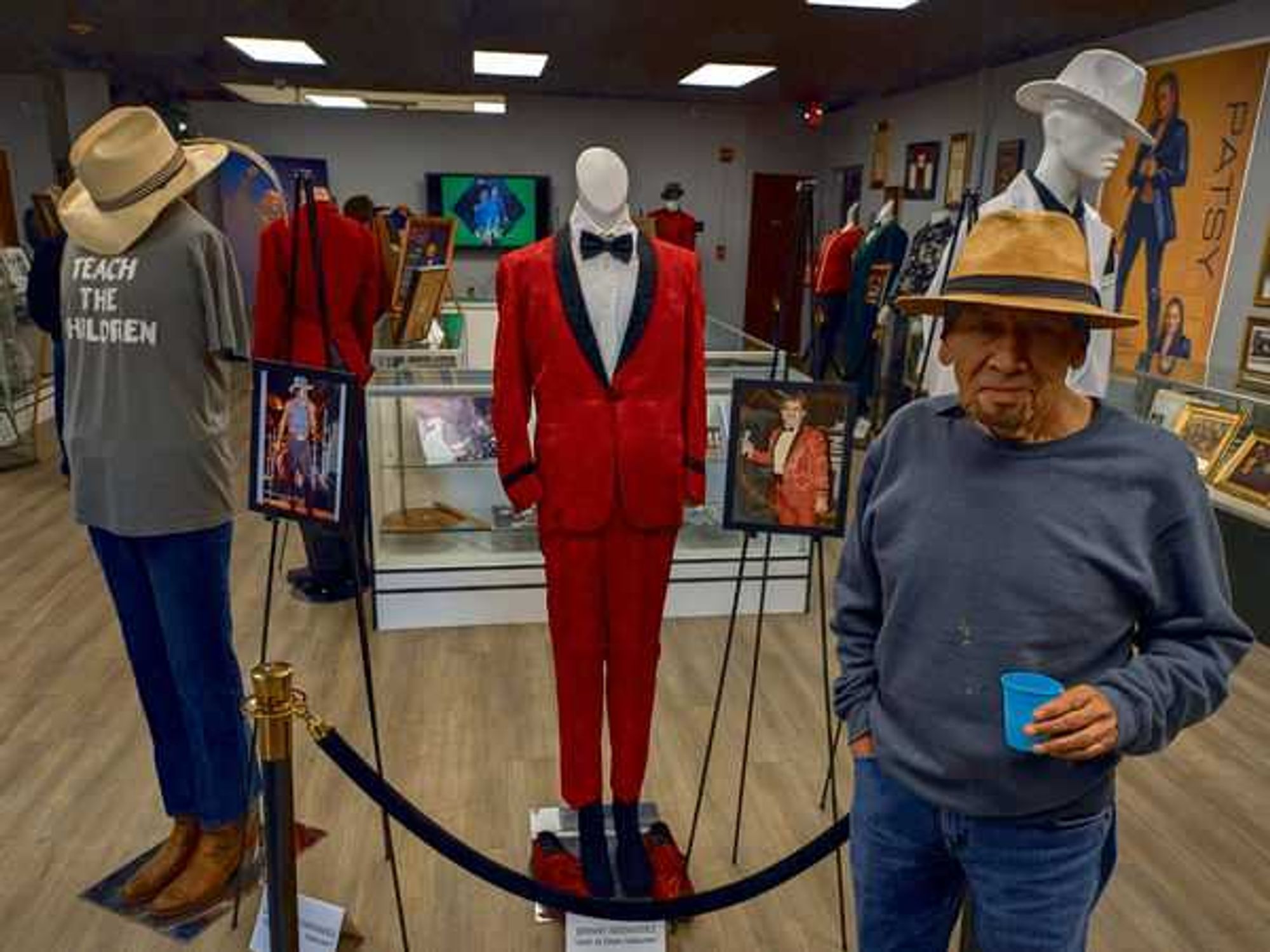Braving the Rio Grande
Kayaking into the Great Unknown at Big Bend National Park
 There are many hotsprings along the river. By paddling away from the roads, itis possible to enjoy them in solitude. The small circle of stones (shown in thephoto) traps some of the warm mineral water bubbling out of a spring.Photo by Stephan Lorenz
There are many hotsprings along the river. By paddling away from the roads, itis possible to enjoy them in solitude. The small circle of stones (shown in thephoto) traps some of the warm mineral water bubbling out of a spring.Photo by Stephan Lorenz The dramatic entrance to Mariscal Canyon appears suddenly from the upstream end.It is the remotest of the three large canyons carved by the Rio Grande withinBig Bend National Park.Photo by Stephan Lorenz
The dramatic entrance to Mariscal Canyon appears suddenly from the upstream end.It is the remotest of the three large canyons carved by the Rio Grande withinBig Bend National Park.Photo by Stephan Lorenz It is easy to find beautiful campsites along the river. Just drag the boat ontoland and set up.Photo by Stephan Lorenz
It is easy to find beautiful campsites along the river. Just drag the boat ontoland and set up.Photo by Stephan Lorenz The seasons can be extreme on the river, with summers unbearably hot, andwinters bitterly cold. The best seasons to float the river are spring and fall,with spring often having lower water levels than fall.Photo by Stephan Lorenz
The seasons can be extreme on the river, with summers unbearably hot, andwinters bitterly cold. The best seasons to float the river are spring and fall,with spring often having lower water levels than fall.Photo by Stephan Lorenz The sheer limestone cliffs reach 1,200 feet within Mariscal Canyon, making itonly accessible by boat.Photo by Stephan Lorenz
The sheer limestone cliffs reach 1,200 feet within Mariscal Canyon, making itonly accessible by boat.Photo by Stephan Lorenz- Life along the river moves at a different pace. Seasonal monsoons carrynutrients and moisture to the floodplains, supporting relatively lushvegetation, including groves of cottonwood, mesquite, and many wild flowers.Photo by Stephan Lorenz
- Fern Canyon, within Santa Elena Canyon, is a must visit. Here, a slot canyonwinds away from the river on the Mexican side and includes waterfalls and manytenajas (featured toward the front of the photo).Photo by Stephan Lorenz
 Away from the canyons the river flows slow and broad, offering spectacularvistas in all directions. Due to the river’s meandering cours,e each mile treatsone to a new view.Photo by Stephan Lorenz
Away from the canyons the river flows slow and broad, offering spectacularvistas in all directions. Due to the river’s meandering cours,e each mile treatsone to a new view.Photo by Stephan Lorenz- Santa Elena Canyon offers relatively easy access to one of the river’s mostspectacular gorges. Just a few miles of upstream paddling will get you rightinto the heart of the canyon.Photo by Stephan Lorenz
- Here we have moonrise over the Sierra del Carmen in Mexico. These mountains arepart of a large biosphere and harbor many large animals, including black bears,which, in recent years have re-colonized Big Bend National Park.Photo by Stephan Lorenz
- Tenajas are cistern-like pools, often within canyons. This one is in FernCanyon. Besides summer, the water is often freezing cold.Photo by Stephan Lorenz
 The river supports dense vegetation within the desert, along with many animalsnot usually found in the otherwise dry climate.Photo by Stephan Lorenz
The river supports dense vegetation within the desert, along with many animalsnot usually found in the otherwise dry climate.Photo by Stephan Lorenz
If there's one thing you must remember about paddling your kayak in Big Bend National Park, it's to expect the unexpected.
I had expected heat during the day, freezing nights, a few ripples and rough turns with plenty of dense cane thickets, and an utter lack of people. But I hadn’t really anticipated wind.
I looked downstream across a broad stretch of water, and the gusts actually kicked up whitecaps. I pulled my kayak onto a sandbar, and sat down, facing upstream, eyes out of the dust.
For the last two hours, I'd been struggling through the storm, trying to remember some special paddling technique that would prove useful in strong headwinds. But abandoning the diagrams for reality, I knew I was just torturing my rotator cuffs. When the squalls blew me upstream, I decided to wait it out.
I had nothing but time. Three days before, I'd launched under perfect conditions near the downstream end of Santa Elena Canyon. While the majority of hikers and canoeists flocked to the dramatic mouth of the gorge, I pointed the nose of my kayak downstream to float approximately 85 miles of the Rio Grande through a section called the Great Unknown, and several canyons further on.
The river was just at the right level to keep things exciting without any danger of overturning in the rapids. I stayed mostly out of the dense cane thickets that choke some of the narrow bends and grow far over the water.
The trick is to lean into the vegetation, or else the current could flip a kayak or canoe. At that point, you just close your eyes and bite cane.
First things first
Before you get wrapped up in the rapids, you've got to get to the river.
Floating the Rio Grande is as easy as tackling the long drive — 10 hours from Houston, more with canoe or kayak in tow — and obtaining free permits from the national park at any of the ranger stations. Several outfitters in the area also offer canoe rentals and guided float trips.
Before heading down or up the river, it's important to check on current water levels. Summer monsoon rains often cause flooding — an integral part of the floodplain ecosystem that supports the green ribbon of vegetation snaking through the desert.
At flood stage, the river can only be navigated by extremely experienced rafters. Launching in a tube, Texas Hill country-style, might be the last thing an amateur ever does. Let's hope that's not you.
At other times of year, especially during the spring, the flow of the river can slow down to a trickle, due to heavy water usage for agriculture hundreds of miles upstream. River trips then turn into what locals call “canoe-assisted hiking” — a less cultured way of travel, where short floats are interrupted by pushing and shoving the craft over shallow sandbanks. Better leave the cooler at home.
Now that's a big river
The Rio Grande flows for 1,885 miles, from southern Colorado to the Gulf of Mexico, making it one of the longest rivers in North America. About one-third of its length marks the international border between Mexico and the United States.
In the Big Bend region, the river makes a large sweep northeast. Long stretches are protected as wild and scenic river. Add Big Bend National Park, Big Bend Ranch State Park, and the Sierra del Carmen Biosphere in Mexico, mix with a general lack of roads, and throw in a dash of remote canyons — you have the perfect recipe for wild solitude.
The river marks the southern boundary of Big Bend National Park for 118 miles, which can be kayaked, canoed, or rafted along various sections, ranging from half-day jaunts to wilderness paddles lasting more than a week. Santa Elena Canyon itself offers 20 more miles of exhilarating downstream rafting or canoeing.
Limestone cliffs reaching 1,200 feet hem in the river. During high water levels, this can be one of the most challenging sections of wild water. The famous Rock Slide Rapid should only be attempted by experienced paddlers.
An easier way to see the splendors of Santa Elena Canyon is to take the slow road, and paddle upstream during low water periods, which are during most times of the year.
By bringing camping gear, it's even possible to stake out a flat grassy spot along the river. But remember — the canyon is known as "the oven" in summer, and "the freezer" in winter, so spring or fall may be the best seasons to go.
One must-see attraction is Fern Canyon, a narrow gorge within Santa Elena Canyon that requires scrambling up waterfalls and diving into tenajas.
Walk, camp, soak, paddle, repeat
Although you're here to paddle, you owe it to yourself to get out of the boat.
Along calmer stretches, I observed birds flitting just above the water, hawking insects. Other wildlife was plentiful, with mule deer in the desert, muskrats and even a few beavers in the river, and golden eagles and peregrine falcons in the larger canyons.
I stopped here and there to explore the desert, the old homesteads, and the endlessly changing vistas, as the river meandered first east, and then north. Countless side canyons and endless miles of pristine desert beckoned to hike, and at nearly every suitable spot, something could be discovered.
To the south, in Mexico, the landscape was barren, due to constant grazing by goats and donkeys. On the United States side, desert vegetation like creosote, ocotillo, prickly pear and some grasses flourished.
After the Great Unknown, the river plunges into Mariscal Canyon, a 1,200-foot limestone chasm that offered the most breathtaking landscape along the way — not to mention the most difficult rapid, Tight Squeeze, but I jostled through all right.
That night, I camped on a small, sandy island, gathered a few twigs to make a weak fire, and warmed some canned food.
Four days later, with plenty of time to spare, I landed on the well-trampled mud bank near the Hot Springs, a popular destination within the park, where hot water bubbles into an oversized bathtub and offers the chance to soak sore limbs. A couple was already bathing in the lukewarm water — the first people I had seen in four days.
Halfway back to civilization, I enjoyed the mineral water for an hour, before pushing back off into the river. I floated down Hot Springs Canyon — the last true landmark before the end of the trip at Rio Grande Village.
It's never enough
With a cooler filled to the brim and spectacular views galore, it may take awhile to burn out on paddling the Rio Grande.
For the kayaking junkies that can't be satiated, the Boquillas Canyon makes a great three or four-day trip. Since there are no serious rapids, it can be completed at a relaxed pace. This run ends outside the national park at La Linda Bridge, which is pretty obvious as it is the only bridge across the river for hundreds of miles. Here, a pre-arranged shuttle can pick up paddlers. Several local outfitters offer shuttle service for nearly all sections of river.
The first time I floated it, we didn’t even have a map. The guide working for the local outfitter where we rented the canoe advised us to "stop before the rabbit ears" on the first day. When the ears finally appeared, there was no doubt.
For the truly hardcore, the Lower Canyons — downstream from Big Bend National Park, but still protected as wild and scenic river — offer an 80-mile or longer section that boasts smaller canyons, but even more solitude. Here, paddlers have to be self-sufficient, as roads are a long way off.
Whether a few miles of paddling or several days on the river, a single bend will leave everything behind. A couple more twists and turns will get you deep into the wilderness. It's just what the city dweller ordered.






 The newly opened Totally Tejano Hall of Fame and Museum includes a growing collection of memorabilia. Photo by Edmond Ortiz
The newly opened Totally Tejano Hall of Fame and Museum includes a growing collection of memorabilia. Photo by Edmond Ortiz